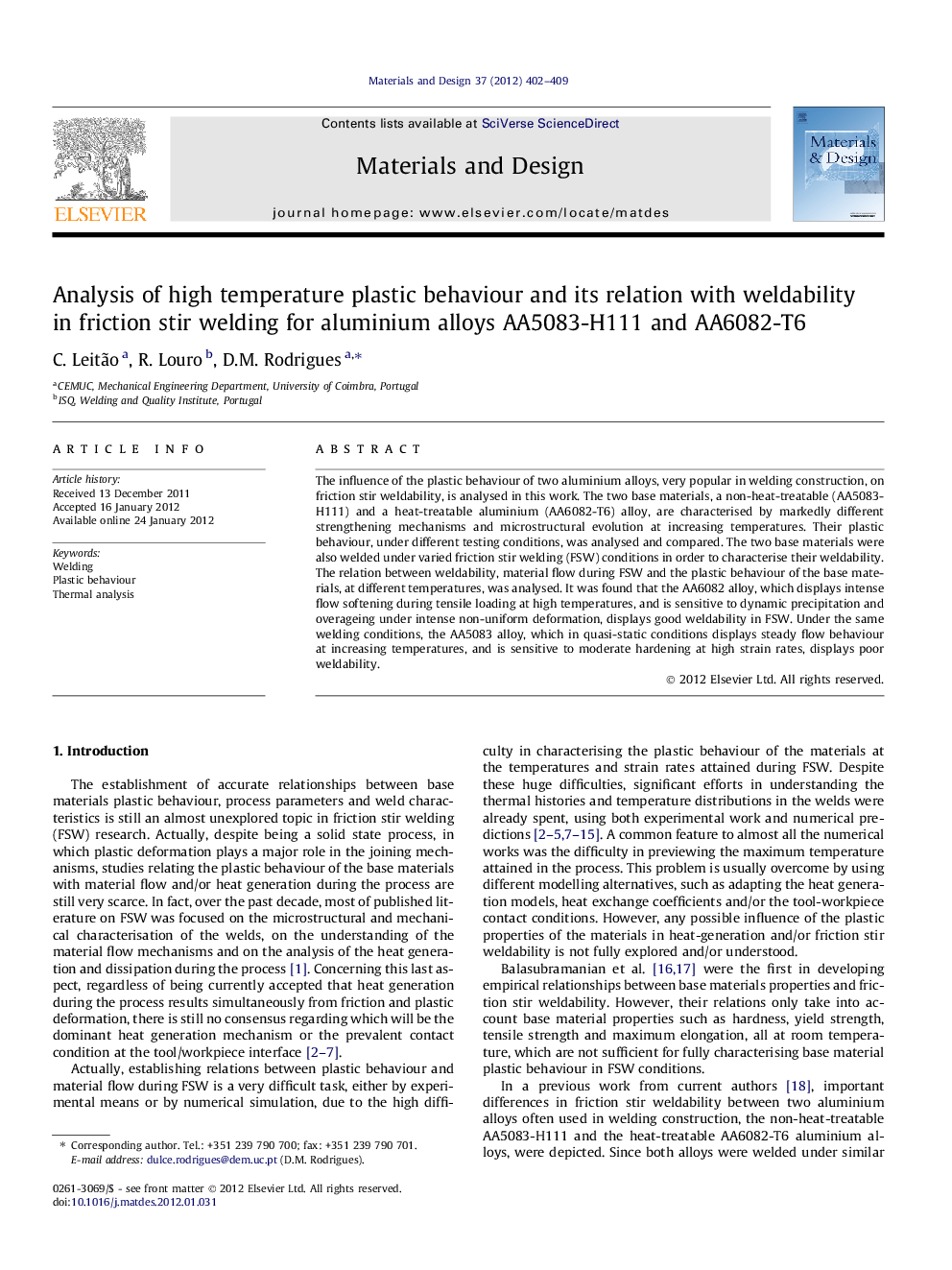| Article ID | Journal | Published Year | Pages | File Type |
|---|---|---|---|---|
| 830778 | Materials & Design (1980-2015) | 2012 | 8 Pages |
The influence of the plastic behaviour of two aluminium alloys, very popular in welding construction, on friction stir weldability, is analysed in this work. The two base materials, a non-heat-treatable (AA5083-H111) and a heat-treatable aluminium (AA6082-T6) alloy, are characterised by markedly different strengthening mechanisms and microstructural evolution at increasing temperatures. Their plastic behaviour, under different testing conditions, was analysed and compared. The two base materials were also welded under varied friction stir welding (FSW) conditions in order to characterise their weldability. The relation between weldability, material flow during FSW and the plastic behaviour of the base materials, at different temperatures, was analysed. It was found that the AA6082 alloy, which displays intense flow softening during tensile loading at high temperatures, and is sensitive to dynamic precipitation and overageing under intense non-uniform deformation, displays good weldability in FSW. Under the same welding conditions, the AA5083 alloy, which in quasi-static conditions displays steady flow behaviour at increasing temperatures, and is sensitive to moderate hardening at high strain rates, displays poor weldability.
► Weldability in FSW of heat and non-heat treatable aluminium alloys is compared. ► Weldability is then related with the plastic behaviour of the base materials at high temperatures. ► Base materials properties and deformation mechanisms at high temperatures are analysed. ► Welds morphology and strength are related with base materials thermal and plastic properties.
